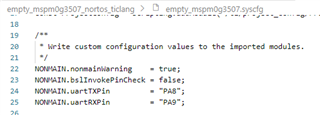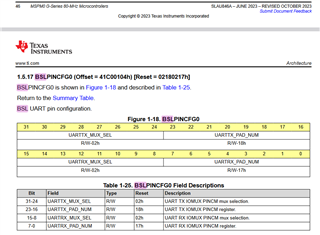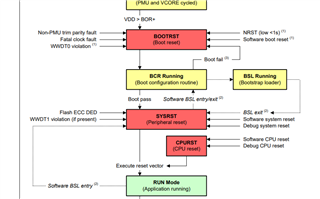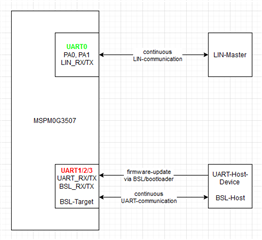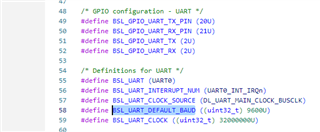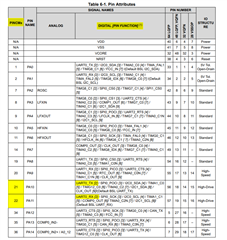Other Parts Discussed in Thread: SYSCONFIG
Tool/software:
Hello my dear supporters and engineers,
I am currently designing a PCB with MSPM0G3507.
And I am concerned about some maybe overlapping pin selection/usage.
I have to use UART0 for LIN-Communication.
Furthermore I want to use a Bootloader which requires the usage of Default BSL UART_RX/TX of pins PA10 and PA11, to implement a firmware update via UART from my external host device.
Apart from that I want to use these pins for regular UART-Communication with my host device.
As I can't use UART0, that is mappable to these pins PA10 and PA11, can I use the BSL-UART-pins for regular communication AND for Bootloader-Data-transfer?
Or can I map BSL UART_RX/TX to any other pin? Or why does it say "default"? It sounds as if it can be mapped to some other pin.
Thanks a lot in advance!
If you need any further information - feel free to ask!
Matze





